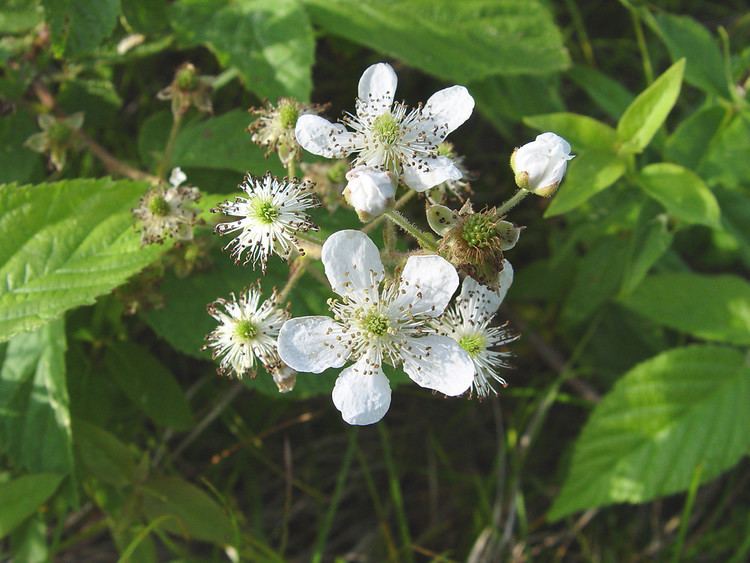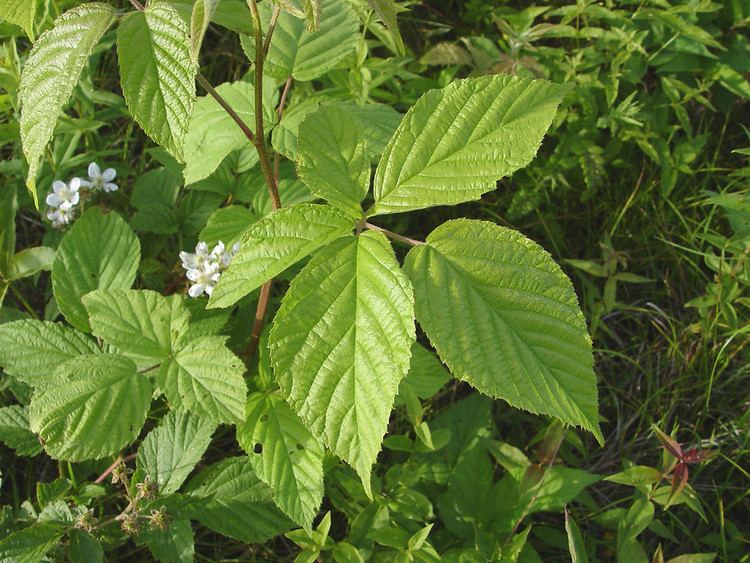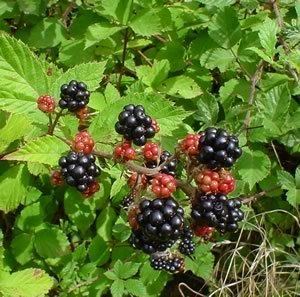Tribe Rubeae | Scientific name Rubus Rank Genus | |
 | ||
Lower classifications Red raspberry, Cloudberry, Tayberry, Black Raspberry, Rubus ulmifolius | ||
Three advantages of navaho blackberries rubus sectio rubus
Rubus is a large and diverse genus of flowering plants in the rose family, Rosaceae, subfamily Rosoideae, with 250–700 species. Raspberries, blackberries, and dewberries are common, widely distributed members of the genus. Most of these plants have woody stems with prickles like roses; spines, bristles, and gland-tipped hairs are also common in the genus. The Rubus fruit, sometimes called a bramble fruit, is an aggregate of drupelets. The term "cane fruit" (or "cane-fruit") applies to any Rubus species or hybrid which is commonly grown with supports such as wires or canes, including raspberries, blackberries, and hybrids such as loganberry, boysenberry, marionberry and tayberry.
Contents
- Three advantages of navaho blackberries rubus sectio rubus
- Wild plant food journey s 28 the dewberry rubus caesius
- Overview
- Hybrid berries
- Scientific classification
- Fossil record
- References

Wild plant food journey s 28 the dewberry rubus caesius
Overview
Most species are hermaphrodites, Rubus chamaemorus being an exception.

The blackberries, as well as various other Rubus species with mounding or rambling growth habits, are often called brambles. However, this name is not used for those like the raspberry that grow as upright canes, or for trailing or prostrate species, such as most dewberries, or various low-growing boreal, arctic, or alpine species.
The generic name means blackberry in Latin and was derived from the word ruber, meaning "red".
The scientific study of brambles is known as "batology".
Examples of the hundreds of species of Rubus include:

The British National Collection of Rubus is held by Barry Clark at Houghton, Hampshire. His collection stands at over 200 species and, although not within the scope of the National Collection, he also grows many cultivars.
Hybrid berries

The term "hybrid berry" is often used collectively for those fruits in the genus Rubus which have been developed mainly in the USA and UK in the last 130 years. As Rubus species readily interbreed and are apomicts (able to set seed without fertilisation), the parentage of these plants is often highly complex, but is generally agreed to include cultivars of blackberries, (Rubus ursinus, R. fruticosus) and raspberries (R. idaeus).
The hybrid berries include:-

Scientific classification
The genus Rubus is a very complex one, particularly the blackberry/dewberry subgenus (Rubus), with polyploidy, hybridization, and facultative apomixis apparently all frequently occurring, making species classification of the great variation in the subgenus one of the grand challenges of systematic botany.
Rubus species have a basic chromosome number of seven. Polyploidy from the diploid (14 chromosomes) to the tetradecaploid (98 chromosomes) is exhibited.
Some treatments have recognized dozens of species each for what other, comparably qualified botanists have considered single, more variable species. On the other hand, species in the other Rubus subgenera (such as the raspberries) are generally distinct, or else involved in more routine one-or-a-few taxonomic debates, such as whether the European and American red raspberries are better treated as one species or two. (In this case, the two-species view is followed here, with Rubus idaeus and R. strigosus both recognized; if these species are combined, then the older name R. idaeus has priority for the broader species.)
Molecular data have backed up classifications based on geography and chromosome number, but following morphological data, such as the structure of the leaves and stems, do not appear to produce a phylogenetic classification.
The classification presented below recognizes 13 subgenera within Rubus, with the largest subgenus (Rubus) in turn divided into 12 sections. Representative examples are presented, but many more species are not mentioned here.
Fossil record
Fossil seeds from the early Miocene of Rubus sp. have been found in the Czech part of the Zittau Basin.
